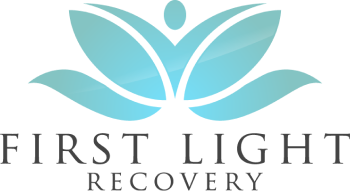Understand your coverage
If you are looking for residential treatment for anxiety and depression that takes Anthem, you are already on a proactive path toward addressing your emotional challenges and cultivating long-term well-being. Residential care can be especially beneficial when traditional therapies alone have not delivered the level of support you need. Anthem is one of the most widely recognized insurance providers in the United States, offering coverage for various behavioral and mental health services, such as inpatient treatment, individual therapy, medication management, and intensive outpatient programs. Understanding exactly how Anthem’s coverage applies to your residential treatment ensures that you can focus on healing rather than worrying about finances.
Anthem’s plans often include benefits for mental health services because of the requirements under the Affordable Care Act, which recognizes behavioral health care as an essential provision. Research indicates that 14.1% of adults in the U.S. reported experiencing poor mental health more than 14 days in the past month [1], highlighting the growing need for accessible and comprehensive care. Anthem addresses this need by partnering with specialized facilities, licensed clinicians, and evidence-based programs that can help you work toward stability, self-awareness, and personal growth.
Anthem’s behavioral health coverage typically provides:
- Access to an extensive network of mental health providers, therapists, and psychiatrists
- Coverage for residential programs and inpatient mental health facilities
- Partial hospitalization, intensive outpatient programs, and crisis intervention
- Assessment and pre-authorization processes to ensure your treatment aligns with Anthem’s guidelines
Because every plan is different, you will want to confirm your specific coverage by contacting Anthem directly or reviewing your policy details. In many cases, Anthem requires pre-authorization for residential care settings, so plan to speak with a Care Manager or representative. This verification is a crucial step, as it clarifies any out-of-pocket costs you may be responsible for, such as deductibles or coinsurance. When you understand your coverage up front, you are better able to choose a program that matches your clinical, emotional, and financial priorities.
Identify treatment priorities
Before you begin your search for a suitable facility, take time to reflect on your most pressing mental health challenges. If you have co-occurring issues like substance use or post-traumatic stress, your journey might be more complex, and you will need comprehensive care strategies. In many instances, you might see the term “dual diagnosis” used to describe simultaneous conditions, such as anxiety and alcohol dependence or depression and opioid use. Because every person has unique challenges, finding a residential setting that can treat multiple underlying factors is essential.
When you know exactly what you are dealing with, you can have an easier time explaining your needs to a potential residential program. Look for facilities that:
- Offer thorough psychological evaluations to tailor individualized plans
- Provide a supportive environment with well-trained medical and mental health professionals
- Use evidence-based therapies, such as cognitive behavioral therapy or dialectical behavior therapy
- Incorporate group and family therapy to encourage open communication
- Integrate holistic or experiential activities to further mental wellness, such as yoga, journaling, or art therapy
Men and women often have different emotional needs when it comes to recovery, and within these groups, individuals vary even further based on age and personal life experiences. If you are a young adult coping with depression or anxiety while transitioning out of your family home, you may find a specialized track that focuses on life skills, academic support, or career development. Programs like a failure to launch residential program with anthem insurance cater specifically to young adults who need structure and targeted guidance.
By aligning your personal objectives with the services offered, you are more likely to feel confident about your choice of facility. This intentional matching between your unique needs and a center’s expertise fosters the conditions necessary for lasting recovery.
Compare facility options
With your priorities in mind, it is time to research specific programs. You can start by visiting Anthem’s website or calling a member services hotline to learn about in-network facilities. For instance, residential depression treatment that accepts anthem approaches may differ from broad-spectrum mental health facilities, as they place a stronger emphasis on mood stabilization, emotional processing, and coping skills.
Be sure to look for the following hallmarks of a quality facility:
- Licensing and accreditation from reputable organizations, such as CARF or The Joint Commission
- A multidisciplinary staff that includes psychiatrists, therapists, and nurses
- Clear program descriptions and daily schedules, so you know what your time in treatment will look like
- Sensible staff-to-patient ratios to ensure individualized attention
- Emphasis on continuity of care, including comprehensive post-discharge planning
You might explore a facility’s alumni network, read online reviews, or seek referrals from trusted individuals—such as educators, faith leaders, or healthcare providers—who understand your needs. If you have a family or spouse who wants to participate in your recovery, many in-network programs also offer family therapy sessions, or an anthem in-network family therapy residential program. These sessions can help rebuild trust, identify specific relational patterns, and create a supportive dynamic that facilitates long-term change.
Comparing features among multiple facilities helps you filter out programs that may not reflect your personal values or budget requirements. If cost becomes a concern, remember that most facilities can provide estimates explaining how expenses are divided between Anthem coverage and potential out-of-pocket fees.
Explore specialized programs
Because residential treatment often caters to more severe or persistent symptoms of anxiety and depression, many facilities offer specialized tracks. For example:
- Brain-based approaches: Some programs focus on neuropathways by combining talk therapies with neurofeedback, TMS (Transcranial Magnetic Stimulation), or brain-mapping techniques. These methods may help you measure progress more concretely and gain insights about your brain health.
- Holistic treatments: An option like a holistic residential ptsd treatment with anthem coverage may integrate mindfulness, nature-based activities, yoga, and meditation designed to help calm an overactive stress response.
- Trauma-focused models: If you have a history of childhood trauma or other distressing life events, a trauma and ptsd treatment center that takes anthem could incorporate trauma-informed therapy, specialized group sessions, and stabilizing techniques to help you process difficult memories safely.
Evaluating these approaches allows you to choose treatments that align with your beliefs and preferences. Many of these specialized programs also use the principles of cognitive behavioral therapy or dialectical behavior therapy, which have proven effectiveness in addressing negative thought patterns tied to anxiety and depression. If you prefer a more experiential form of therapy, such as art or music therapy, you can usually find a facility that integrates these creative outlets into your daily schedule.
Check Anthem guidelines
Every Anthem plan is unique, so you should carefully review how many residential treatment days are covered, whether or not you require a referral, and if you need pre-authorization. Anthem sometimes recommends a step-down approach, where individuals begin in a higher level of care and gradually move to lower-intensity outpatient programs.
According to Anthem’s own website, you may have access to:
- Specialized behavioral health care managers who evaluate your treatment needs
- Partial hospitalization or intensive outpatient options after an inpatient stay
- Crisis lines, like the Behavioral Health Crisis Line at 844-912-2425 (TTY 711), for immediate emotional distress [2]
- Integrated programs for co-occurring conditions, ensuring you receive the support necessary for lasting recovery
These services are there to safeguard your well-being and minimize disruptions in your care. Additionally, ensure you understand the difference between in-network and out-of-network providers—using an in-network facility typically lowers your out-of-pocket costs and reduces administrative hurdles. If you are interested in an in-depth approach through a residential program beyond your local area, always confirm with Anthem whether the facility is within your plan’s network. In many cases, traveling for treatment can open your options to highly specialized facilities.
Assess the cost structure
Knowing how you will pay for treatment is another critical piece of the puzzle. Anthem usually covers some or all of the following expenses:
- A portion of daily residential fees, which may include room and board, therapy hours, medication management, and therapeutic activities
- Physician, therapist, and counselor fees during residential treatment
- Diagnostic tests, screenings, or lab work as clinically warranted
Your leftover financial responsibility may include co-pays, co-insurance, and meeting your deductible if it has not been met for the year. As you explore potential programs, ask questions like:
- “How many residential days will Anthem cover?”
- “Has the facility worked with Anthem insurance before?”
- “Is an extension of residential care possible if my symptoms persist?”
- “What happens if I must step down to a lower level of care?”
If budget is a concern, know that some states, including Ohio and California, have multiple in-network facilities for insurance providers like Anthem. According to one resource, 91 centers in Ohio accept Anthem insurance for addiction and mental health treatment [3]. The variety in coverage and state-specific options gives you flexibility and can often help drive down costs if you remain in-network.
Consider First Light Recovery
As you review different facilities, you may hear about First Light Recovery, a residential mental health center that is in-network with Anthem Blue Cross Blue Shield. This program focuses on supporting individuals grappling with anxiety, depression, and other co-occurring disorders such as addiction. First Light Recovery emphasizes a holistic approach, ensuring that every participant has a thorough evaluation to create individualized plans, combining evidence-based therapies, peer support, and life-skills training.
Key reasons you might prefer First Light Recovery:
- In-network partnership with Anthem, enabling smoother coverage processes
- Specialized therapeutic techniques incorporating group and individual counseling
- Qualified mental health professionals who understand the unique challenges tied to anxiety and depression
- Opportunities for emotional growth through creative therapies (art, movement, journaling)
- Structured environment balanced with a nurturing atmosphere for men and women
If you want to learn more about the clinical approach of First Light Recovery and understand exactly how they handle Anthem insurance, you can explore references, such as First Light Recovery or speak with a representative directly. Each element in their treatment program aims to align your specific emotional struggles with a plan that addresses your background, aims, and personal values.
Coordinate your next steps
Once you have narrowed down a few facilities, it is time to finalize the logistics and coordinate with Anthem. Here are several steps to streamline the process:
- Verify benefits: Call the number on your insurance card to confirm your coverage. Inquire about pre-approval requirements and the allowable duration of residential care.
- Obtain referrals or medical records: Gather any necessary mental health assessments, previous therapy notes, or medication histories. This documentation can expedite your admission process.
- Request pre-authorization: Many residential programs require a formal pre-authorization from Anthem before admission. You may need to work collaboratively with your primary care physician or counselor to submit relevant clinical information.
- Set personal goals: Before admission, discuss your expectations. Outline what you hope to accomplish—reducing panic attacks, more stable emotional regulation, or developing coping methods for depressive spells. Documenting these goals helps track progress.
- Begin admission: Move forward with scheduling. Facilities often have intake coordinators who manage your admission date, gather insurance details, and advise you on what to bring during your stay.
Throughout these steps, maintain open communication with both Anthem and the chosen facility. If you encounter delays or unexpected requirements, do not hesitate to ask questions or escalate the matter with a supervisor or Care Manager. The success of your residential stay often hinges on smooth coordination between your insurer and your selected program.
Discover lasting support
After completing a residential program, you may wonder how to continue building your resilience and coping skills. Effective aftercare is essential for mitigating relapse or regression into severe anxiety or depression. Anthem may cover follow-up therapies or transitional programs, such as:
- Outpatient counseling: Weekly sessions with a licensed therapist or counselor
- Support groups: Local or virtual meetings where you can discuss your challenges and successes
- Medication management: Consultations with a psychiatrist or nurse practitioner to regulate your prescriptions
- Wellness resources: Access to digital platforms that offer motivation, discussion forums, or daily recovery tips [4]
If your struggles with anxiety and depression stem from unresolved trauma, you may consider exploring a specialized center like one offering anthem coverage for trauma-informed residential care. Seeking additional treatment programs—such as a trauma and ptsd treatment center that takes anthem—can help in addressing deeply rooted emotions that, if left untreated, might contribute to daily stress or lingering depressive episodes.
Your journey may include multiple providers and levels of care over time. The key is recognizing that there is no single approach to mental health recovery, and Anthem’s network often accommodates that reality. As you grow and encounter new challenges, you can return to therapy or other services without feeling locked into a single treatment plan.
Overcoming barriers to care
Choosing to seek residential treatment can feel daunting—both from an emotional standpoint and a financial perspective. You may worry about pausing work, family responsibilities, or daily routines for an extended stay. However, many individuals find that the immersive nature of residential care is what finally fosters the breakthroughs they have been seeking. Time away from external stressors helps you focus on developing new coping mechanisms and absorbing healthy thought patterns, so you are better equipped to handle everyday challenges upon discharge.
Anthem’s coverage often helps lessen financial barriers, making residential care a more viable option. Still, you might encounter the following obstacles:
- Stigma around mental health: Friends or relatives might not understand why you require residential support. Reassure them you are making a thoughtful decision to restore balance in your life.
- Time commitments: Some people may spend several weeks in residential care. Speak with your employer, educator, or family to arrange necessary absences. Many states have legal protections or Family and Medical Leave Act (FMLA) provisions for intensive treatment.
- Fear of changes: It is normal to feel anxiety about major lifestyle modifications. A supportive environment in residential care programs acknowledges this fear and encourages gradual adjustments.
Addressing these barriers is part of your path toward healing. Many facilities offer resources that can help you prepare for a smoother transition.
Create your individualized plan
Throughout your stay in a residential facility, keep in mind the recurring themes that lead to a strong and sustainable mental health journey. You deserve tailored treatment programs that embrace your experiences and offer consistent validation. What you learn in therapy sessions, educational workshops, or skill-building modules can serve as a guide once you leave the program. Your aftercare or discharge plan should include the following:
- Continued therapy: Set up routine appointments to maintain momentum in your emotional processing.
- Lifestyle adjustments: Experiment with exercise routines, balanced nutrition, stress-elimination techniques like meditation, and regular sleep schedules.
- Healthy support networks: Identify at least one friend, family member, or peer support group you can contact when you have setbacks.
- Immediate contacts for crises: Keep hotlines or your therapist’s contact details ready. If you have concerns about relapsing into substance use or encountering intense depressive symptoms, reach out promptly.
If you do notice a recurrence of severe symptoms, discuss options such as a residential mental health treatment in orange county accepting anthem or a different region to see if a return to a residential setting is warranted. It is far more beneficial to seek help earlier than to wait for a crisis. Your individualized plan will evolve over time, reflecting your personal journey and the progress you have already made.
Coordinate with Anthem for long-term success
Getting the maximum benefit from your insurance plan is an ongoing effort, especially when facing chronic conditions like anxiety or depression. Staying in touch with Anthem’s Care Managers can help you navigate new or escalating symptoms. They can also point you toward resources like specialized apps, local community services, online education modules, or support groups that reinforce your mental health trajectory.
Some individuals prefer to supplement their existing care with:
- Virtual services: Providers like Brave Health offer outpatient mental health assistance for medication management and therapy, sometimes with the first appointment scheduled in less than a week [4].
- Peer support platforms: Online forums or text-based systems that connect you with fellow individuals in recovery. For instance, Anthem’s SUD recovery programs may offer daily check-ins and motivational resources.
- Family integration: If you are a parent or caretaker, ask about group sessions that include children and spouses. This form of care can solidify communication and teach healthier ways of coping with tension or emotional conflict.
Your journey might also intersect with other Anthem-supported initiatives like the OhioRISE program if you have loved ones younger than 18 with complex behavioral health needs. Whether you are a teen transitioning into adulthood or a parent juggling multiple responsibilities, Anthem aims to integrate physical health benefits with mental health services so you are not facing these challenges alone.
Embrace hope for lasting change
Choosing a residential program that aligns with your needs, accepts Anthem insurance, and provides individualized plans can mark a turning point in your life. Past anxiety or depressive episodes do not have to dictate your future. Residential care, in collaboration with consistent coverage, can offer a structured reset that helps you discover new perspectives and coping tools.
Some key advantages of working with an Anthem-covered program include:
- Learning to identify and challenge negative thoughts through structured therapy
- Building camaraderie with others facing similar challenges, which can be invaluable during moments of doubt
- Gaining skills in problem-solving, resilience, and emotional regulation
- Ensuring financial feasibility, especially with in-network options and appropriate pre-authorizations
If you are still comparing different treatment environments and coverage details, explore resources like anthem in-network depression rehab or anthem in-network cbt and dbt residential center. By reading further, you can better gauge the style of care and confirm whether these programs resonate with your treatment preferences.
You deserve the chance to heal in a setting that nurtures your emotional well-being and sets you up for healthy, long-term recovery. With Anthem advocating for accessible, quality mental health coverage, the path to resolving your anxiety or depression may be closer than you realize. The immediate goal is to get in touch with your insurance representative, clarify what services are available, and select a residential facility where you feel safe embarking on a journey of renewal. Let this process be a testament to your commitment to self-care, one that opens new doors to a more balanced, hopeful life.
References
- (NCBI Bookshelf)
- (Anthem)
- (Recovery.com)
- (Anthem)




